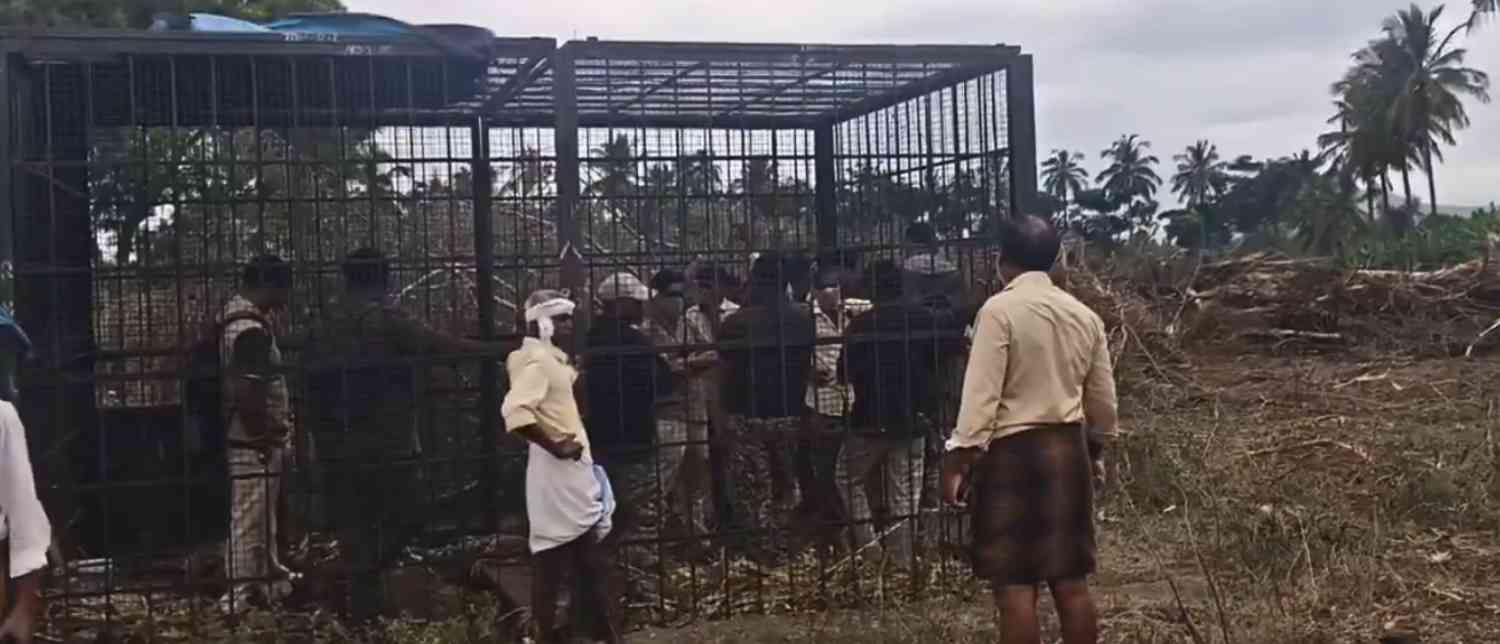In Karnataka’s Chamarajnagar district, an unusual protest shocked both officials and villagers. Residents of Bommalapura, frustrated over a prowling tiger that had not been captured, locked forest staff inside a cage meant for the big cat. The act, though dramatic, highlighted how fear and anger can boil over when people feel ignored in matters of safety and livelihood.

The villagers said the tiger had been moving close to their farms and had already attacked cattle. For families dependent on livestock, losing even one animal is a huge financial hit. The forest department had set up traps and told villagers that they were monitoring the situation. But after weeks with no result, the community felt ignored. Their protest, they said, was meant to push the authorities into taking urgent action.
For the people living in villages around forests, the fear is real. A tiger roaming nearby is not just about danger to human lives, but also about lost income when livestock is killed. For children walking to school or farmers returning home after sunset, anxiety becomes part of everyday life. Many villagers believe that officials only react quickly once media attention comes in, and until then their complaints are left unheard.
From the side of the forest staff, the problem is different. Experts say catching a tiger is not an easy job. Every animal has wide territories, and setting the wrong kind of trap may not work. Using tranquilizers is also risky because missing a shot or disturbing the animal could make the situation worse. This means officials need to study movement carefully and wait for the right chance — but for villagers, that wait feels endless.

This incident in Bommalapura is not the first of its kind. Across India, human-wildlife conflict has been increasing. India is home to nearly 3,170 tigers today, the highest number in the world. While this is good news for conservation, it also means tigers are coming into more contact with people as forest areas shrink or overlap with farms. What looks like a success story for wildlife can feel like a crisis for villagers living near these protected zones.
The bigger question is about how to balance both needs: protecting people and protecting wildlife. On one side, villagers demand faster responses, better fencing, and compensation when their cattle are killed. On the other, conservationists warn that careless measures could endanger tigers, which remain a protected species. If people begin to see tigers only as threats, conservation itself could suffer in the long term.
Some solutions have already been tried in other parts of the country. Rapid response teams are being trained in states like Madhya Pradesh to quickly respond when a tiger is reported. Some places have introduced better systems of compensation, paying villagers within days of cattle loss. A few areas have also started programs where villagers move voluntarily away from conflict zones, with the government providing housing and land elsewhere.

The protest in Bommalapura, though unusual, is a reminder of how fragile the trust is between villagers and authorities. Locking forest staff in a cage may have looked extreme, but it showed that people feel desperate to be heard. Officials, on their part, now face pressure to rebuild communication and provide reassurance, not just explanations.
What the incident really teaches us is that human-wildlife conflict is not only about the presence of animals but also about the absence of effective systems. People want safety, animals need space, and governments must ensure both. Unless stronger steps are taken to speed up responses and build confidence, these dramatic protests could become more common across India’s tiger regions.
With inputs from agencies
Image Source: Multiple agencies
© Copyright 2025. All Rights Reserved. Powered by Vygr Media.























